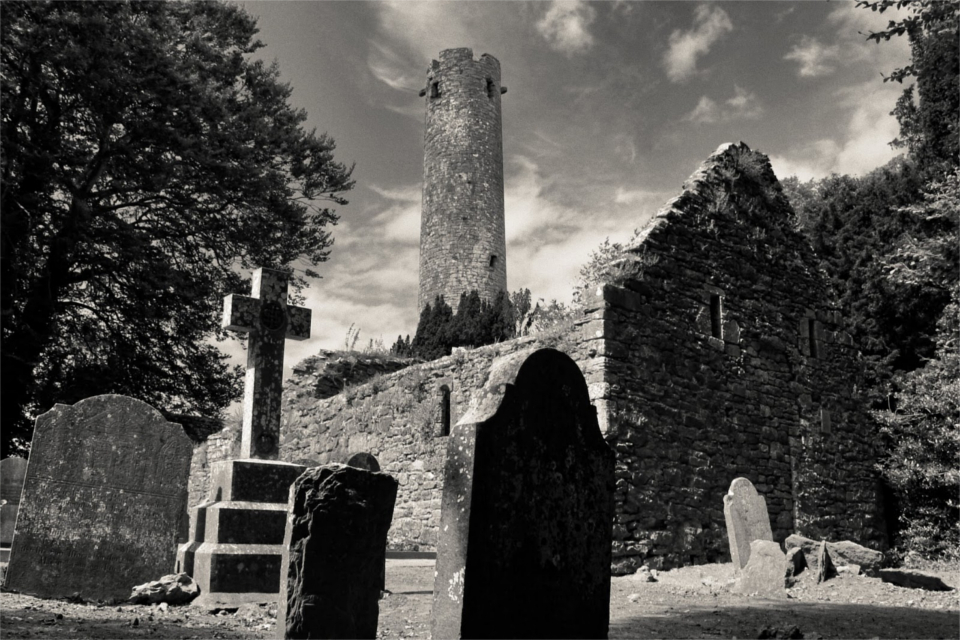
Kilree Church & Round Tower
Kilree gets it’s name from Cill Rí or the church of the King. Legend has it that King Niall Caille (who drowned in the King's River at Kells) is buried beneath the High Cross but we will never know for sure. The church of Kilree was built in 1050 AD. The church has an altar tomb which commerates two important members of the Comerforde Family of Danganmore. They lived close to an old church and graveyard there in a castle on what is now Forristals farm. The inscription on the tomb translates as ‘Here lie Mr. Richard Comerford, formerly of Danganmore, and Johanna St. Ledger, his wife a matron pious, hospitable, and charitable to all, who died October 4, 1622’.

Kilree Round Tower is dated approx. 1100 AD and would have been used as a place of refuge during attack. The door is located high up on the side of the building and is accessed from a ladder which is then pulled up by the residents. Kilree round tower has a cellar under the door level and a number of people have died by falling the 10ft drop over the years. The tower has four stories with each storey having light provided by a small window. The bell would have been rung from the final storey which also has four windows to allow it's use as a watch tower. The tower is unusual in that it is on top of a square plinth, this can only be seen elsewhere at Aghaviller, which is also in Kilkenny at nearby Newmarket.
Kilree cross was erected in approx. 950 AD. Like the round towers, high crosses are associated with monastic life. It’s not known what exactly they were used for as they aren’t associated with marking graves. Much of the markings from the Kilree Cross have worn away with wind and rain erosion over the years but if you look closely you will see a spiral on the right symbolising growth and a spiral on the left symbolising death and decay. The centre of the cross represents God and the bare circle on the bottom represents the winter sun.
Kilree Round Tower features in the video below until 1:47